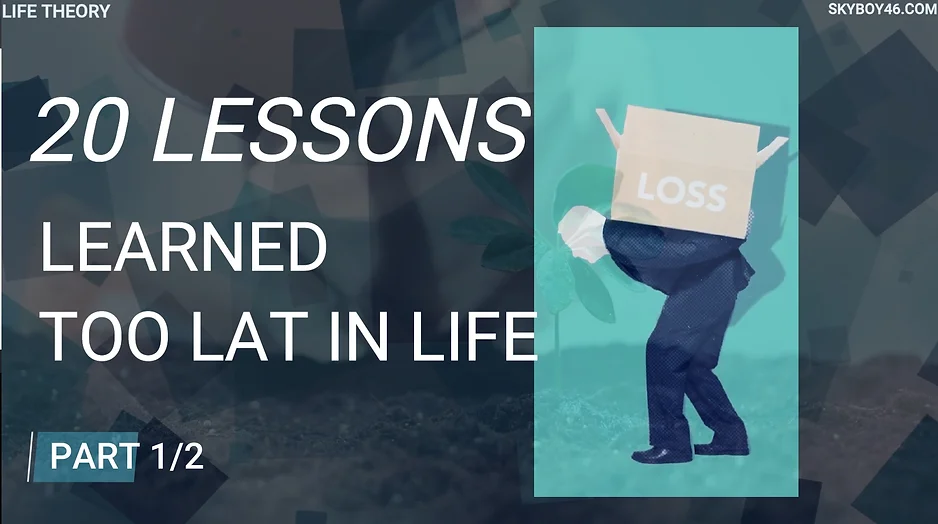You know that eerie feeling when you’re in the middle of a conversation, or perhaps just walking down a street, and it hits you—”I’ve done this before”? It’s not just a vague recollection but a deep, almost visceral sensation that you’ve lived this very moment, with these people, in this place, once before. That’s déjà vu—a term borrowed from French, meaning “already seen.” But there’s another side to this coin, a lesser-known but equally perplexing phenomenon called jamais vu, or “never seen.” It’s the unsettling experience where something familiar—like a well-known face or a routine path—suddenly becomes alien and unrecognizable, as though you’re encountering it for the first time.
SUBSCRIBE: https://www.youtube.com/@LifeTheory46
VISIT: https://linktr.ee/lifetheory46
Get You Monthly Life Stories in Advance & Our Premium Learning Packs HERE:
Unraveling the Enigma: Déjà Vu and Jamais Vu
You know that eerie feeling when you’re in the middle of a conversation, or perhaps just walking down a street, and it hits you—”I’ve done this before”? It’s not just a vague recollection but a deep, almost visceral sensation that you’ve lived this very moment, with these people, in this place, once before. That’s déjà vu—a term borrowed from French, meaning “already seen.” But there’s another side to this coin, a lesser-known but equally perplexing phenomenon called jamais vu, or “never seen.” It’s the unsettling experience where something familiar—like a well-known face or a routine path—suddenly becomes alien and unrecognizable, as though you’re encountering it for the first time.
As intriguing as these experiences are, they’ve often been relegated to the realm of quirky conversation starters or pop culture references, like in “The Matrix.” But their origins are rooted not in sci-fi but in the intricacies of the human brain, where memory and perception can sometimes cross wires, leading to these moments of cognitive dissonance. Scientists have spent decades puzzling over why déjà vu happens to some of us often while others rarely experience it, and why jamais vu lingers just out of the common spotlight.
Let’s begin with déjà vu, which over 60-70% of people have reported experiencing at least once. Typically occurring between the ages of 15 and 25, it feels like a glitch in reality—almost as if time folds back on itself, making you relive a scene you can’t possibly have lived before. Some believe déjà vu is evidence of reincarnation, while others suspect it’s a glitch in the matrix—an error in the fabric of existence itself. Theories abound, but what’s actually going on in the mind?
Déjà vu happens not as a memory before an event but during the event itself. Lasting no more than 10 to 30 seconds, it’s as if your senses trick you into thinking that the present moment is a replay. Some researchers break down déjà vu into categories; the most common type is associative déjà vu, which is memory-based. You might walk into a room you’ve never been in, yet something about the scent or the layout feels intensely familiar. This may stem from your brain’s memory centers—the medial temporal lobes—which house the hippocampus and other structures that handle familiarity and recollection.
Another form, biological déjà vu, frequently occurs in people with temporal lobe epilepsy, usually right before a seizure. This connection has provided researchers with a more concrete way to study the phenomenon. When these regions of the brain misfire, it can lead to a false sense of familiarity—a sensation that can feel so real, it’s hard to dismiss as mere coincidence.
Think of it this way: your brain is a marvel of complex processes, firing off billions of neural signals per second. Amid all this activity, it’s statistically inevitable that some signals will cross paths in unexpected ways. Déjà vu may be the result of one such crossed wire—a brief miscommunication in the brain’s recognition system that tricks you into feeling like you’ve lived this moment before.
And then there’s jamais vu, the lesser-known counterpart that plays tricks in the opposite direction. Imagine walking the same route you take every day or staring at your reflection in the mirror, and suddenly, none of it seems familiar anymore. Or picture repeating a word like “door” over and over again, until it starts to lose meaning and becomes an unfamiliar string of sounds. That’s jamais vu, a brain glitch where the familiar morphs into the strange, leaving you questioning your sense of reality. While déjà vu is characterized by an unexpected familiarity, jamais vu is defined by an unsettling strangeness, even with the things you know best.
Research on jamais vu is sparse compared to its counterpart. It’s thought to involve the same temporal lobes responsible for déjà vu, but that’s about where the understanding ends. Repeat a word enough times, and it begins to sound foreign; the brain’s circuitry seems to wear thin, causing a temporary lapse in recognition.
What makes déjà vu and jamais vu so enigmatic is how difficult they are to study. These experiences are fleeting, subjective, and leave no physical trace for scientists to observe. Researchers must rely on personal accounts and descriptions, using what we know about brain anatomy to piece together theories. Inside the medial temporal lobe, where our conscious memory resides, the parahippocampal gyrus helps distinguish between what’s familiar and what isn’t. When a miscommunication occurs in this area, it’s as though the brain mistakes the new for the known—or vice versa.
For those who travel often or indulge in frequent film marathons, déjà vu occurs more frequently. The increased exposure to novel environments and experiences can create an overabundance of sensory data, making it easier for the brain to misinterpret the familiar as déjà vu during periods of stress or information overload.
Though science has yet to fully explain these curious experiences, we can take some comfort in the fact that they are not signs of a simulation glitch or a slip into some alternate dimension. They’re simply the brain’s occasional hiccups in processing the overwhelming volume of sensory and memory data it handles daily. Déjà vu may happen when recognition processes are disrupted, giving us a false sense of familiarity, while jamais vu might occur when these processes momentarily break down, making the familiar feel distant and strange.
As we continue to advance our understanding of neuroscience and improve brain scanning technology, perhaps the day will come when these mysteries are unraveled entirely. For now, the human brain remains an organ of wonder, where the lines between memory, reality, and perception occasionally blur, reminding us of the complexity that defines our very nature.
So, next time you find yourself caught in a moment that feels strangely familiar—or impossibly foreign—know that it’s just your mind’s way of navigating the intricate labyrinth of human consciousness. Breathe deeply, let the sensation wash over you, and remember: sometimes, even the most well-oiled machinery stumbles. And that’s okay—it’s all part of the human experience.
–> Read More Life Stories Here:
https://www.lifetheory.us
https://www.lifetheory.eu
Buy all of our Life Stories & Our Premium Learning Packs. Listen or Read to them anytime you want. Have them Forever.
You can get each monthly lesson on our website at https://www.skyboy46.com/store
SHARE THIS STORY
Visit Our Store
SHOP NOW
www.skyboy46.com & www.myskypet.com
Designed For Pet Lovers & Introverted Souls
Sport, Hobbies, Motivation, Music & Art






~EXPLORE MORE~
www.linktr.ee/skyboy46


